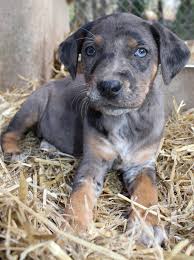 House-Training Your Labrador Puppy
House-Training Your Labrador Puppy
The idea of this article is to give you a guide to ‘stress free house training’. Much of housetraining is about teaching your puppy to include your entire house in the area he regards as his den. One of the best ways to do this is to start by giving the puppy access to a very small area in your home and increasing that area gradually as he matures and his memory improves.
Keys to successfully house train Your Labrador Puppy
Avoid house training accidents
The best way to avoid mistakes is to take your Labrador puppy outside to relieve himself more frequently. At first you can start every half hour, favorably after every time he wakes from a nap, plus every time he has finished a meal, or every time he has finished a game or been thrilled for some reason. This would mean very great many trips outside but they will eventually work. As the days go by you can begin to stretch out the gaps between trips outside, but slow and sure wins the race. Any effort to hurry this process is likely to result in accidents, and accidents inspire more accidents. It is worth to remember that puppies have very small bladders and very little control over them. When they need to go, they have to go. This is why your best line of attack is to pre-empt them with plenty of trips outside.
Each time your puppy relieves himself in your chosen spot you can use a special word or words and after a few weeks you will find that when you say this word, your puppy will start to feel the desire to relieve himself. These words will have become associated in his mind with the act of going to the toilet. In a couple of months or so, many puppies will have learned to ‘wee’ on command through this simple technique.
Clearing up accidents
Evidently mistakes will sometimes happen and they can’t be helped, but repeated mistakes will delay your training considerably because puppies like to wee where they have weed previously. If you are not vigilant it can be a downward spiral.
Once a puppy has had an accident on the floor you need to remove all traces of it. And this may be challenging bearing in mind your puppy’s extraordinary sense of smell so you will need to be thorough and diligent in this. You can purchase some special purpose cleaners that do not contain any substances which might attract a puppy to repeat the accident on the same spot.
Crate training
Crates can be very handy during the house training a puppy process if they are used wisely. Labrador puppies have a natural disinclination to wee or poop on their beds. Putting them in a small confined space is like a ‘den’ to him and the puppy will not want to wee in his treasured crate. As long as you do not leave him there until his bladder cannot contain any more liquid, this is a great opportunity for you.
Poor Bladder control
Puppies have a small bladder capacity, and very little ability to wait before relieving their bladder once it is full. Some eight week old puppies have much undeveloped bladders and need to empty them at 15 to 30 minute breaks for much of their waking day. This can last for much of the first week.
Labrador puppies have a small bladder which they do not have control over. What you need to consent to is that this is not something you can control. The puppy has the bladder he has, and you cannot influence that. What you can do is make it easy for him to be clean, by taking him outside to his toilet area very early in the morning, and even in the middle of the night , if that is what he needs.
House training a puppy is one of those areas where the more effort you put in earlier on, the greater your chances of an easy journey in the long run. You will get there soon, so enjoy your puppy and try not to worry too much about house training.
Other house training articles
can you house train a goat
Other house training articles
can you house train a goat
